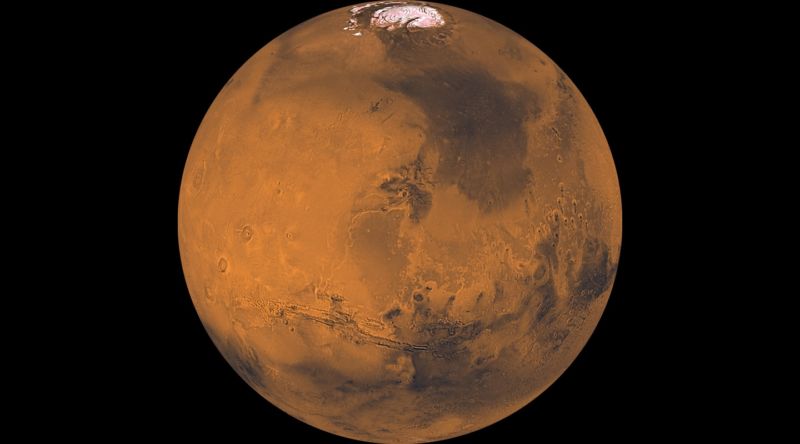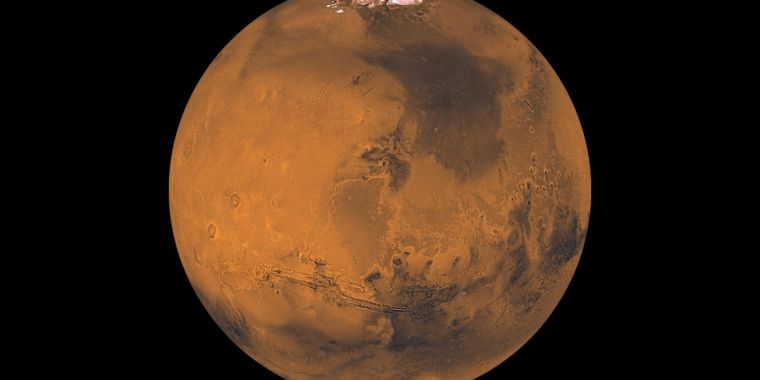
The US Senate on Thursday slashed the budget for NASA’s ambitious mission to return soil and rock samples from Mars’ surface.
NASA had asked for $949 million to support its Mars Sample Return mission, or MSR, in fiscal year 2024. In its proposed budget for the space agency, released Thursday, the Senate offered just $300 million and threatened to take that amount away.
“The Committee has significant concerns about the technical challenges facing MSR and potential further impacts on confirmed missions, even before MSR has completed preliminary design review,” stated the Commerce, Justice, Science, and Related Agencies subcommittee in its report on the budget.
The committee report, obtained by Ars, noted that Congress has spent $1.739 billion on the Mars Sample Return mission to date but that the public launch date—currently 2028—is expected to slip, and cost overruns threaten other NASA science missions.
Further, the report states that the $300 million allocated to the Mars mission will be rescinded if NASA cannot provide Congress with a guarantee that the mission’s overall costs will not exceed $5.3 billion. In that case, most of the $300 million would be reallocated to the Artemis Program to land humans on the Moon.
Big budget
The Senate’s proposed budget for the Mars mission follows a report by Ars three weeks ago that delved into its exploding costs. Internally, NASA has been discussing scenarios in which the total mission costs might reach $9 billion. The report also raised serious questions about the ability of NASA and the field center leading the mission, the Jet Propulsion Laboratory, to deliver a critical lander in time for a 2028 launch date.
The concern expressed by some scientists, including former NASA science chief Thomas Zurbuchen, is that the ballooning cost of Mars Sample Return will cannibalize funding from other science missions. And if the price is already approaching $10 billion now, then it is likely to spiral further out of control.
“If the answer is this is not the decade to do it, my heart breaks because I put so much effort into it,” Zurbuchen told Ars. “But it is better to not do it than to torch the whole science community. We have to have the courage to say no. That’s the only way we earn the right to say yes.”
The Senate cites a budgetary cost of $5.3 billion, which was the mission’s estimate in the planetary science community’s influential “decadal” survey published last year. This survey listed Mars Sample Return as its top priority, but added a caveat on costs. If the total price exceeded $5.3 billion by 20 percent or more, NASA should not take that money from other planetary programs. Instead, the agency should ask Congress for a “budget augmentation.”
The US Senate appears to not have liked the sound of this. It has now told NASA that if the mission cannot be done for $5.3 billion, it effectively should not be done. That is a significant escalation of the stakes for NASA’s highest-profile science mission of the 2020s.
What happens now
This is not the final word in the budgetary process. The US House will also set its budget priorities for the coming year, and then the House and Senate will negotiate a final budget for the coming fiscal year. That will be one important point this fall.
Another will be the work of an “Institutional Review Board” convened by NASA to assess the sample return mission and to make recommendations for its success. The board is led by Orlando Figueroa, a retired deputy center director for science and technology at NASA’s Goddard Space Flight Center, and the group will publicly release a report in late August or September.
It seems likely that this independent review board will provide guidance to NASA and Congress on whether the sample return mission, as designed, is affordable; or whether it needs substantial changes or should be canceled entirely.
Congress has sent warning signs like this to NASA before. For example, in 2011, the US House proposed canceling the James Webb Space Telescope due to its ongoing delays and cost overruns as part of the budgeting process. In the end, the Webb telescope received the funding it needed and ultimately launched successfully at the end of 2021.
However, Casey Dreier, who leads The Planetary Society’s advocacy and policy efforts, said there may be a notable difference between then and now. Much of the scientific community rallied around the Webb telescope a decade ago, he said. There appears to be a much shallower support base for the Mars mission because it may provide data for a narrower slice of scientific research.
Dreier said his organization continues to support the Mars Sample Return mission because of its prioritization by the decadal survey. But he said the Planetary Society will be closely watching the findings of the independent review board.
“We support the decadal survey and we want Mars Sample Return to happen, but we need to know what happens with this independent review,” he said. “Maybe this is the kick in the pants that NASA needs to get this under control.”








